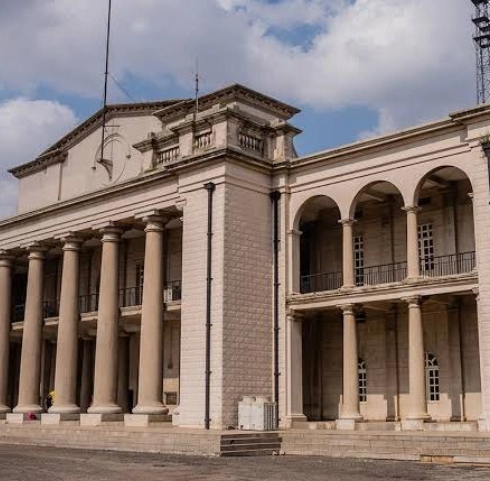The Seven Hills and Historic ‘Idi’ Locations of Ibadan – A Guide to the City’s Cultural and Environmental Treasures
Ibadan is famous with for its seven hills, the city is also renowned for its “Idi” locations, places named after some certain tree species where early settlers gathered.
So you will read more about both the hills and the “Idi” locations, their historical and cultural importance, and even the role these geographical landmarks play in Ibadan’s environment and community.
The Seven Pupolar Hills of Ibadan
Ibadan is often referred to as “The City of Seven Hills.” funny enough all these hills are scattered across the city and have been instrumental in its history, while serving as natural landmarks and even offering strategic viewpoints. Here are the famous seven hills of Ibadan:
1. Oke Padre
Let talk about Oke Padre which is one of the prominent hills in Ibadan, and it is located very close to the central business district of ibadan. The hill is known for housing alot of religious organization and offers a panoramic view of the city. Its height and location have historically provided strategic advantages during times of the conflict.
2. Oke Ado
Omohh, Oke Ado is located in one of the busiest commercial areas in Ibadan, coz is not to far to Cocoa House. The hill is surrounded by markets, shops, and even residential buildings, blending history with the city’s modern hustle and bustle. The hill’s location really reflects Ibadan’s growth from a rural setting to an urban metropolis.
3. Oke Bola
Oke Bola is famous for its residential areas and is also home to historical buildings and monuments, i beleive you will love this. The hill offers a unique mix of both colonial and indigenous architectural designs, which makes the it a focal point for historians and tourists alike.
4. Oke Mapo
This hill is one of the most popular landmarks in Ibadan, there’s no one from Ibadan that would have heard about MAPO or been there before coz of largely due to the presence of Mapo Hall—a colonial-era structure used for political gatherings(Mostly when Policican are campanging) and traditional events. Oke Mapo symbolizes the unity of Ibadan, as many of the city’s significant decisions were made here.
5. Oke Are
Oke Are is a prominent residential area that has played a very important role in Ibadan’s history. The hill is noted for its serene atmosphere and greenery, making it a peaceful escape from the city’s busy life. People who love coded life or a peaceful, silent serene will love this area.
6. Oke Sapati
Oke Sapati is another residential hill, known for its close proximity to several educational institutions. The hill has become a symbol of Ibadan’s intellectual growth, with alot of schools and colleges dotting its landscape.
7. Oke Mokola
Oke Mokola is located in the northern part of the city very close to Agodi Gardens and has long been a hub for printing Press and other commercial activities. This hill also boasts stunning views of Ibadan’s landscape, combining the beauty of nature with human settlement.
While these are the seven primary hills, Ibadan is also home to several other hills like Oke Ibadan, Oke Itunu, Oke Aremo, and Oke Seni, further adding to the city’s natural beauty.
The Expanded List of Hills in Ibadan
In addition to the list of hills i mentioned up there, several other noteworthy hills contribute to the city’s cultural and environmental landscape. Some of these include:
8. Oke Ibadan
Oke Ibadan is one of the most central hills in the city. This hill actually symbolize the true Identity of Ibadan’s, representing the heart of the ancient city. It has been an important location for trade and settlement since the city’s founding.
9. Oke Itunu
Located very near the Ibadan Polytechnic, Oke Itunu of now is full of students mostly used for student hostel although its also a residential area which you can as well find a cool spot. It overlooks several academic institutions, symbolizing the city’s commitment to intellectual growth and learning.
10. Oke Aremo
Oke Aremo, situated in one of the older parts of the city, has been a residential and commercial area for generations. The hill’s name is mostly associated with the Yoruba word for royalty, further connecting Ibadan to its monarchical heritage.
11. Oke Seni
Oke Seni, another key hill in Ibadan, has historical significance as a place where early settlers built some of the city’s first homes. Today, it remains a notable residential area.
The Importance of Hills in Ibadan
Hills in Ibadan have long served various purposes:
Historical Significance: Hills like Oke Mapo were strategic locations for political and military gatherings. These natural elevations provided an advantage in monitoring potential threats and even enhancing communication across the city.
Tourism and Heritage: Hills like Oke Mapo and Oke Ado attract tourists and cultural enthusiasts. The presence of historical landmarks like Mapo Hall adds to their allure.
Environmental Benefits: Hills has an important role in controlling floods by directing water flow into natural basins. They also contribute to the cooling of the environment through green vegetation, helping regulate Ibadan’s microclimate.
Spiritual and Religious Importance: Many religious institutions(CAC, Cele, C&S and others) are built on these hills, signifying it as a sacred or spiritual locations for Ibadan’s inhabitants.
The “Idi” Locations of Ibadan (Idi means bottom or the backside.)
Apart from the hills i mentioned up there, Ibadan is also known for its many “Idi” locations. The term “Idi” loosely translates to “bottom” or “backside,” but in this context, it often refers to gathering spots under specific trees where early settlers would meet. SO every of the location holds a unique historical background tied to the tree after which it is named.
1. Idi-Arere
Idi-Arere is named after the Arere (obeche) tree. This location, situated between Oja-Oba and Molete, was where early settlers do converged for meetings and other important gatherings. It was a focal point for decision-making in the city’s formative years.
2. Idi-Ose
The name Idi-Ose was derived from the Ose (baobab) tree. which is Located in front of IITA around Ojoo/Moniya Road, it was another important gathering spot for Ibadan’s early residents.
Sadly, the Tree no longer exit there again coz it been taken over by IITA.
3. Idi-Ishin
Located near the Jericho GRA area, Idi-Ishin is named after the Ishin (ake apple) tree. This location is historically significant, which symbolizes the close connection between nature and the daily lives of Ibadan’s early settlers.
4. Idi-Ape
Idi-Ape is named after the Ape tree, situated at the intersection of Iwo Road and Bashorun. This site was crucial for the convergence of settlers, which makes it a notable point of historical reference.
5. Idi-Ayunre
Idi-Ayunre, located at the outskirts of Ibadan on the road to Ijebu-Ode, is named after the Ayunre (albizia Zygia) tree. This area marks Ibadan city’s boundary, representing the extension of Ibadan’s influence and settlement.
6. Idi-Obi
Idi-Obi is named after the Obi (kola nut) tree. This location holds significant cultural value, as the kola nut is an essential symbol in Yoruba tradition, often used in welcoming visitors and during important ceremonies.
7. Idi-Ito
Idi-Ito derives its name from the Ito tree. Similar to other “Idi” locations, this place was an essential meeting point for Ibadan’s early settlers.
The Cultural and Environmental Importance of “Idi” Locations
The “Idi” locations I mentioned up there were more than just meeting points for Ibadan’s settlers; they were also cultural symbols that emphasized the relationship between the people and their environment. These spots have remained landmarks that remind modern residents of the city’s.
Historical Significance: The “Idi” locations signify the points of convergence where Ibadan’s founders would gather to gist and have other important discussions, often under the shade of prominent trees.
Environmental Importance: These areas highlight the importance of preserving nature in urban settings. The trees not only provided shade but also contributed to the ecological balance of the area by acting as natural air purifiers and habitats for various wildlife.
Cultural Heritage: Each “Idi” location is tied to specific traditions, ceremonies, and stories passed down through generations. The trees under which these locations were named are often considered sacred in Yoruba culture.
Environmental Role of Hills and “Idi” Locations in Ibadan
Hills and “Idi” locations has their importance in the environment. They provide natural drainage systems that prevent flooding and help regulate the climate. The trees in the “Idi” locations contribute to biodiversity and air quality, while the hills, with their vegetation, act as carbon sinks.
How Hills Help the Environment
Hills offer several environmental benefits:
Water Drainage: The natural slope of the hills directs rainwater into rivers and streams, reducing the risk of flooding.
Vegetation: Hills are often covered in vegetation, which helps prevent soil erosion and promotes a balanced ecosystem.
Climate Control: The trees and greenery on hills play a vital role in cooling the surrounding areas, contributing to a healthier and more stable environment.




Post Comment